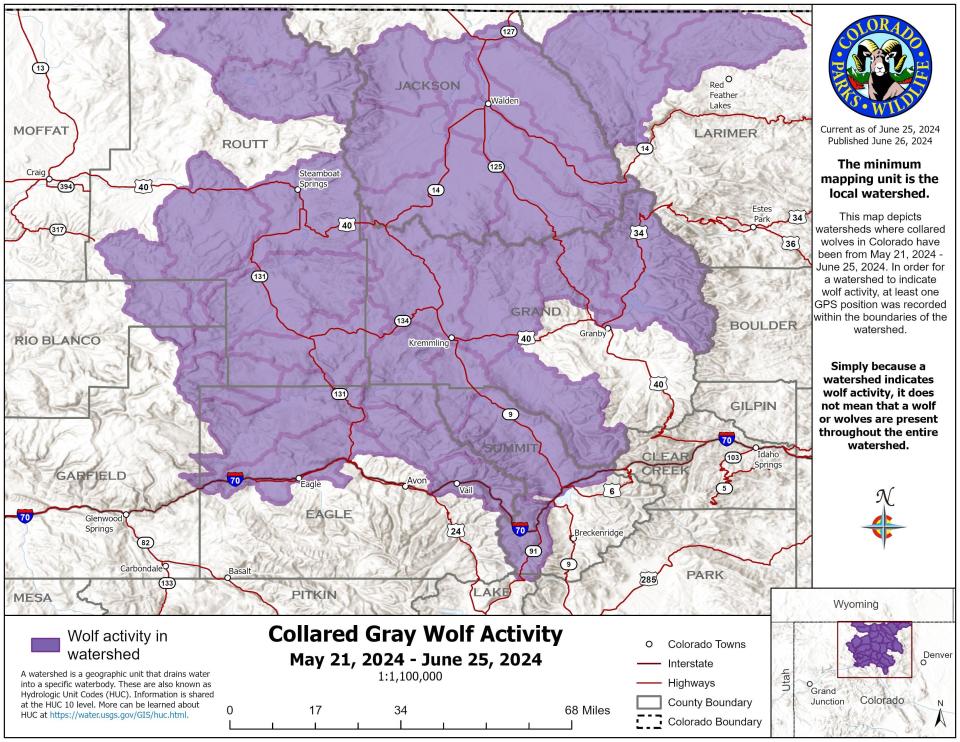Colorado wolves make movement into Rocky Mountain National Park drainages
Colorado's wolves appear to have made movement into watersheds that penetrate western Rocky Mountain National Park, according to the Colorado Parks and Wildlife's latest wolf activity map.
The map covering May 21 to June 25, and released June 26, shows wolf activity extending south and east of U.S. Highway 34 between Granby and Estes Park. Wolf movement was detected in the same area during the April mapping, but the May map didn't show movement in those watersheds.
There has been no official confirmation of wolves recently being seen in Rocky Mountain National Park, according to park spokesperson Kyle Patterson.
Wolves were largely killed off in Colorado by the 1940s. They were reintroduced as proponents believe their presence will in time help rebalance Colorado's ecosystem.
Here are other extensive wolf movements in watersheds indicated by the latest mapping:
East into northern Larimer County, including Red Feather Lakes area, along the Wyoming border
South of Interstate 70 along Colorado Highway 91 between Copper Mountain and Breckenridge. Colorado Parks and Wildlife officials said no wolves have actually been reported south of I-70 anywhere.
North and south of I-70 around Eagle.

Areas of notable wolf movement retraction during the last month include:
Northern Jackson County along the Wyoming border
A sliver just south of Granby
A strip just north of Steamboat Springs in Routt County, which saw its first confirmed wolf depredation of livestock June 16.
Colorado Parks and Wildlife's wolf activity map is released monthly. The latest was the agency's sixth map since 10 wolves were captured in Oregon and released in late December in Grand and Summit counties of Colorado as part of the state's initial reintroduction of the predator.
The map is broken down by watersheds, which can be large. If a wolf collar indicates a wolf or wolves were, or are, in that watershed, the entire watershed is marked as having wolves in it at some point in the last month. It does not necessarily mean a wolf or wolves are currently in those areas.
This article originally appeared on Fort Collins Coloradoan: How long before wolves wander into Rocky Mountain National Park?

